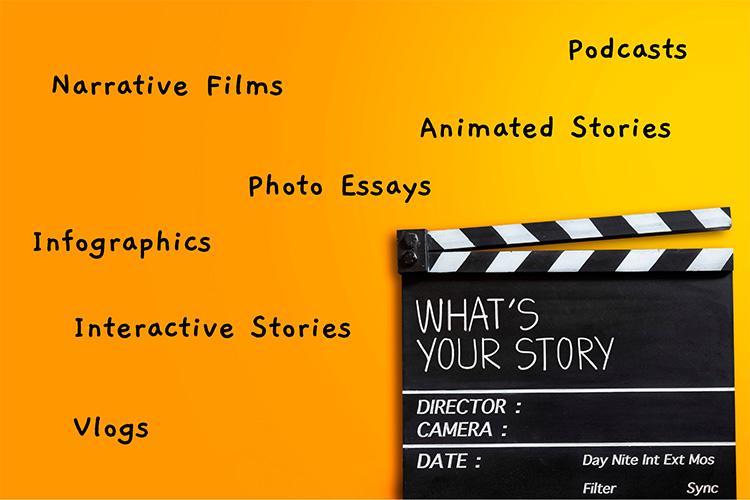Secure your Kid's Spot in our Writing Classes! Register here!

What we're talking about!
Check back often for updates!
Five Innovative Ways to Tell a story.

Let’s begin by acknowledging that the goal of this essay is not to establish that traditional methods of reading and writing are better or worse when compared to more modern techniques. Rather we want to explore how we can incorporate some modern tools into reading and writing in order to support diverse learners.
When writing by hand, the neural activity in the brain differs significantly compared to typing. This tactile experience enhances memory retention, allowing learners to internalize concepts better. The act itself, pen on paper, requires a deliberate coordination of motor skills and cognitive faculties, cultivating mindfulness and concentration. Likewise, reading from a physical book provides a sensory experience; the weight of the book, the texture of the paper, and even its distinct scent create an immersive reading environment. Not to mention the fact that exposure to screens at an early age can negatively impact a child’s development and sleep patterns. Studies suggest that readers of physical books have better comprehension and recall compared to those reading digitally.
While the benefits of hand-writing a story or a journal are many, there’s also an emotional appeal attached to articles written in one’s own handwriting. Traditional reading and writing have always been more than just activities; they've been experiences. No one can deny the nostalgia and the sense of intimacy that handwritten letters evoke. The tactile sensation of flipping through pages, the rustling sound of paper, the scent of a fresh book, or the act of letting ink flow on paper - each evokes emotions and connections. These methods anchor us to the past, offering a tactile and sensory experience that digital means often struggle to replicate. While cherishing these classic literary sensations, it’s fascinating to explore how the digital era is helping us evolve our storytelling techniques.
Storytelling isn't just about books or spoken words anymore. Thanks to computers and the internet, we now have many cool new ways to tell and share stories! These digital tools help us use pictures, sounds, and videos to make storytelling more fun and lively. These platforms, whether social media, blogs, podcasts, or interactive websites, allow for rich, multimedia stories that combine text, images, sound, and video to create an immersive experience. They let us share our stories with people all over the world, bringing everyone closer. This new way of storytelling is exciting because it helps us learn, entertain, and connect with others in new innovative ways.
Let’s explore a few different ways that we can use some of these modern tools to tell a story.
These are digital videos that tell a story, often personal, using the tools of filmmaking. They might include interviews, personal narratives, or fictional pieces and usually involve elements such as scripts, actors, directors, and video editing to convey the story effectively. Children can use phones or ipads to record videos, add voice over it, and use scripts to create their own films. Free tools like the iMovie app or WeVideo can help them create and edit these stories.
If students are not ready to create their own video yet, they could tell a story through a digital photo essay. A digital photo essay uses the technique of telling stories through pictures. Students can use a series of photographs to tell a story or evoke a series of emotions in the viewer. They are often accompanied by text or captions and can be presented as a slideshow, collage, or interactive experience.
If students do not have photos to tell a particular story, like a story about their scientific discovery or learnings from their field trip, they can use infographics. These are visual representations of information, data, or knowledge intended to present complex information quickly and clearly through the use of design elements, icons, and text. Though not always narrative, they can tell a story through the data they portray.
Audio storytelling has seen a resurgence through podcasts, where stories are told orally. These digital audio files are downloadable and often serial, allowing for episodic storytelling that listeners can subscribe to. Children at home or at school can use their phone or computer to record an interview or a discussion to create their own podcast. This can be a great way for students to practice their public speaking skills as well as writing skills while they are preparing the questions or conversation points for teh podcast.
These stories are told using animation rather than live footage. Animation allows for imaginative visuals and is particularly effective for creating content that would be impossible or impractical to film in real life, like a futuristic story, or a dystopian narrative. There are many platforms available, like puppetPals or Toontastic, that enable students to draw, animate, and share their own cartoons with friends and family.
These immersive storytelling forms use technology to create a story that can not only be explored and consumed by the user in a far more interactive way, it also makes the storytelling process much more enjoyable. Students get to practice their storytelling as well as their digital proficiency skills, which are both essential twenty first century skills. These innovative storytelling techniques are particularly helpful for students who face unique challenges in processing information as they might be able to absorb the information better when presented in other forms rather than words and letters. Overall, integrating traditional methods of writing with modern digital tools is a necessary strategy that can create a more accommodating environment that recognizes the individual strengths and challenges of individual students.
Help your kids fall in love with reading!
Need a list of amazing books to get your kids inspired about writing their own stories?
Grab your free copy by completing the form.
We'll email you the ebook!